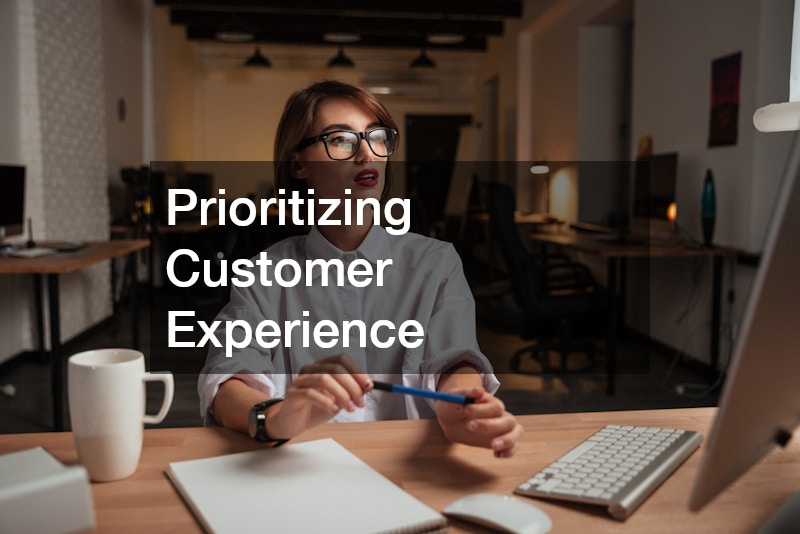The e-commerce industry continues to evolve at a rapid pace, offering unprecedented opportunities for new business owners. Whether you’re selling handmade crafts, tech gadgets, or apparel, understanding the fundamentals of e-commerce is critical to launching a successful business. With tools like 3PL e-commerce order fulfillment and digital marketing, you can build a scalable and efficient operation that meets modern consumer expectations.
This guide is designed to help new business owners navigate the complexities of e-commerce, from selecting a platform to optimizing logistics and customer experience.
1. Understanding the E-Commerce Landscape
E-commerce refers to the buying and selling of goods or services online. It encompasses a wide range of business models, including:
- B2C (Business-to-Consumer): Selling directly to customers, often through an online store.
- B2B (Business-to-Business): Providing products or services to other businesses.
- D2C (Direct-to-Consumer): A growing trend where brands sell directly to their customers, bypassing traditional retailers.
Benefits of E-Commerce
- Global Reach: Access customers from all over the world.
- Lower Overheads: Eliminate costs associated with brick-and-mortar stores.
- Data Insights: Use analytics to track customer behaviour and optimize your strategy.
Understanding the e-commerce landscape helps you identify the best model and strategy for your business.
2. Choosing the Right Platform
Your e-commerce platform serves as the foundation of your online store. Choosing the right one is crucial for providing a seamless shopping experience.
Popular E-Commerce Platforms
- Shopify: Known for its ease of use and scalability.
- WooCommerce: A WordPress plugin ideal for businesses already using the platform.
- BigCommerce: Offers extensive features for growing businesses.
When selecting a platform, consider factors like ease of use, customization options, scalability, and integrations with logistics providers for services like 3PL e-commerce order fulfillment.
3. Building a User-Friendly Website

Your website is often the first interaction customers have with your brand. A well-designed site can make or break their shopping experience.
Key Elements of a Great E-Commerce Website
- Responsive Design: Ensure your site works seamlessly on mobile, tablet, and desktop devices.
- Fast Loading Speeds: A delay of even a few seconds can lead to lost sales.
- Easy Navigation: Use intuitive menus and clear calls to action.
- Secure Payments: Offer a variety of payment options and ensure they are secure.
Investing in a professional website design can help establish trust and encourage repeat business.
4. Setting Up Efficient Logistics
Logistics is the backbone of your e-commerce operation. From inventory management to shipping, every step must be optimized to meet customer expectations.
The Role of 3PL E-Commerce Order Fulfillment
Third-party logistics (3PL) providers handle essential supply chain tasks, including:
- Inventory Storage: Warehousing products close to your customer base.
- Order Picking and Packing: Ensuring accurate and efficient processing of orders.
- Shipping: Negotiating competitive rates with carriers to ensure timely deliveries.
By outsourcing to a 3PL e-commerce order fulfillment provider, you can focus on growing your business while ensuring a seamless customer experience.
5. Marketing Your E-Commerce Business
No matter how great your products are, customers need to find your store. E-commerce marketing is key to driving traffic and converting visitors into buyers.
Effective Marketing Strategies
- Search Engine Optimization (SEO): Optimize your site for relevant keywords to appear higher in search results.
- Social Media Marketing: Use platforms like Instagram and Facebook to showcase products and engage with your audience.
- Email Marketing: Send personalized emails with product recommendations and promotions.
- Pay-Per-Click Advertising (PPC): Invest in Google Ads or social media ads to reach your target audience.
A combination of organic and paid marketing strategies ensures a steady flow of traffic to your online store.
6. Optimizing Inventory Management
Efficient inventory management is essential for meeting demand without overstocking or running out of products.
Tips for Managing Inventory
- Use Inventory Software: Track stock levels in real-time to avoid overselling.
- Forecast Demand: Use sales data to predict future demand and plan accordingly.
- Collaborate with a 3PL Provider: Partnering with a 3PL e-commerce order fulfillment provider allows you to monitor inventory across multiple locations and streamline restocking.
Proper inventory management minimizes costs while keeping customers satisfied.
7. Prioritizing Customer Experience

Customer experience plays a significant role in building brand loyalty. Satisfied customers are more likely to recommend your business and return for repeat purchases.
Ways to Enhance Customer Experience
- Offer Fast Shipping: Consumers expect their orders to arrive quickly and on time.
- Provide Excellent Customer Support: Use chatbots or a dedicated support team to resolve issues promptly.
- Encourage Reviews and Feedback: Positive reviews can boost your credibility and attract new customers.
Working with a 3PL e-commerce order fulfillment partner ensures timely deliveries, which is critical to a positive shopping experience.
8. Leveraging Analytics for Growth
E-commerce platforms and marketing tools offer valuable insights into customer behaviour and sales performance.
Key Metrics to Monitor
- Conversion Rates: The percentage of visitors who make a purchase.
- Cart Abandonment Rates: The percentage of shoppers who leave without completing their purchase.
- Customer Lifetime Value (CLV): The total revenue generated by a customer over their relationship with your business.
Use this data to refine your strategies and improve your store’s performance.
9. Scaling Your E-Commerce Business
Once you’ve established a strong foundation, focus on scaling your e-commerce business. This might include expanding your product range, entering new markets, or enhancing your logistics network.
Strategies for Scaling
- International Shipping: Work with logistics providers to ship products globally.
- Outsource Operations: Collaborate with a 3PL e-commerce order fulfillment provider to manage increased order volumes.
- Diversify Sales Channels: Sell on marketplaces like Amazon and eBay in addition to your online store.
Scaling strategically ensures sustainable growth without compromising quality or customer satisfaction.
10. Staying Ahead in the E-Commerce Industry
E-commerce is a dynamic industry, with trends and consumer expectations constantly evolving. Stay ahead by:
- Keeping Up with Technology: Embrace innovations like AI-driven personalization and AR for product visualization.
- Adapting to Consumer Trends: Monitor industry reports and consumer preferences to adjust your offerings.
- Building a Strong Brand: Focus on creating a memorable and authentic brand identity that resonates with your audience.
Entering the world of e-commerce can be both exciting and challenging. By understanding the essentials—from choosing the right platform to leveraging 3PL e-commerce order fulfillment—you can set your business up for success.
Focus on delivering value to your customers through a seamless shopping experience, efficient logistics, and excellent service. With a solid foundation and a commitment to continuous improvement, your e-commerce venture can thrive in today’s competitive market.

